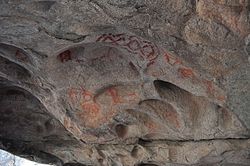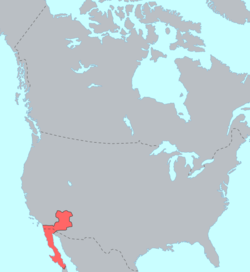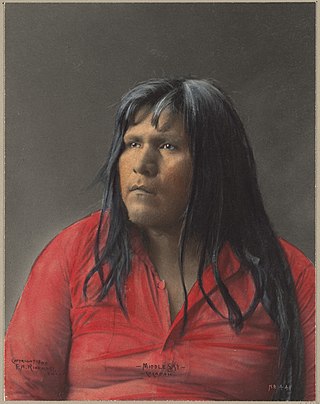
The Cocopah are Native Americans who live in Baja California, Mexico, and Arizona, United States.
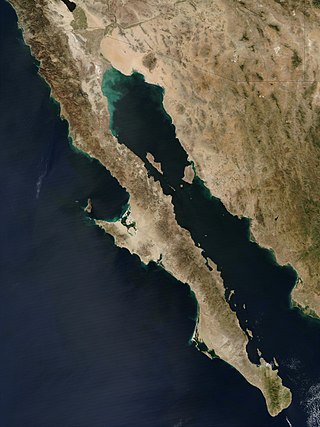
The Baja California peninsula is a peninsula in northwestern Mexico. It separates the Gulf of California from the Pacific Ocean. The peninsula extends from Mexicali, Baja California, in the north to Cabo San Lucas, Baja California Sur, in the south.
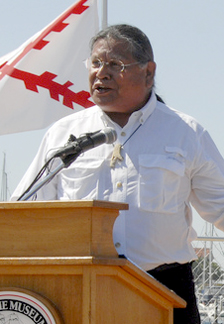
The Kumeyaay, also known as 'Iipay-Tiipay or by the historical Spanish name Diegueño, is a tribe of Indigenous peoples of the Americas who live at the northern border of Baja California in Mexico and the southern border of California in the United States. They are an indigenous people of California.
Yuman music is the music of Yumans, a group of Native American tribes from what is now Southern California and Baja California. They include Paipai, Havasupai, Yavapai, Walapai, Mohave, Quechan, Maricopa, Tipai-Ipai, Cocopa, and Kiliwa people. Folk songs in Yuma culture are said to be given to a person while dreaming. Many individuals who are in emotional distress go to a secluded area for a few weeks, there to receive new songs.

The Yuman–Cochimí languages are a family of languages spoken in Baja California, northern Sonora, southern California, and western Arizona. Cochimí is no longer spoken as of the late 18th century, and most other Yuman languages are threatened.

The Kiliwa are an indigenous people of Mexico living in northern Baja California. Historically they occupied a territory lying between the Cochimí on the south and the Paipai on the north, and extending from San Felipe on the Gulf of California to San Quintín on the Pacific coast. Their traditional language is the Kiliwa language.

The Paipai are an indigenous people of Mexico living in northern Baja California. Their traditional territory lies between the Kiliwa on the south and the Kumeyaay and Cocopa on the north, and extending from San Vicente near the Pacific coast nearly to the Colorado River's delta in the east. Today they are concentrated primarily at the multi-ethnic community of Santa Catarina in Baja California's Sierra de Juárez.
Kumeyaay traditional narratives include myths, legends, tales, and oral histories preserved by the Kumeyaay people of southern California and northwestern Baja California.
Quechan traditional narratives include myths, legends, tales, and oral histories preserved by the Quechan (Yuma) people of the lower Colorado River area of southeastern California, southwestern Arizona, and northeastern Baja California.
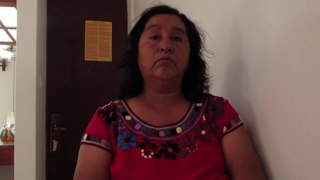
Paipai is the native language of the Paipai, spoken in the Baja California municipality of Ensenada. It is part of the Yuman language family. There are quite a few speakers left, but most are over age 50. Most Paipai now live in Kumeyaay villages.
Ipay, also known as 'Iipay or Northern Diegueño, is the Native American language spoken by the Kumeyaay people of central San Diego County, California. Hinton (1994:28) suggested a conservative estimate of 25 surviving Ipai speakers.
Kumeyaay (Kumiai), also known as Central Diegueño, Kamia, 'Iipay Aa, and Campo, is the Native American language spoken by the Kumeyaay people of southern San Diego and Imperial counties in California as well as five Kumiai communities in Baja California Norte, MX.

Tiipai (Tipay) is a Native American language belonging to the Delta–California branch of the Yuman language family, which spans Arizona, California, and Baja California. As part of the Yuman family, Tiipai has also been consistently included in the controversial quasi-stock Hokan. Tiipai is spoken by a number of Kumeyaay tribes in northern Baja California and southern San Diego County, California. There were, conservatively, 200 Tiipai speakers in the early 1990s; the number of speakers has since declined steadily, numbering roughly 100 speakers in Baja California in a 2007 survey.
Margaret Langdon was a US linguist who studied and documented many languages of the American Southwest and California, including Kumeyaay, Northern Diegueño (Ipai), and Luiseño.

The San Pasqual Band of Diegueño Mission Indians of California is a federally recognized tribe of Kumeyaay people, who are sometimes known as Mission Indians.

The Manzanita Band of Diegueño Mission Indians of the Manzanita Reservation is a federally recognized tribe of Kumeyaay Indians, who are sometimes known as part of the Mission Indians.

The La Posta Band of Diegueño Mission Indians of the La Posta Reservation is a federally recognized tribe of the Kumeyaay Indians, who are sometimes known as Mission Indians.

The Inaja Band of Diegueño Mission Indians of the Inaja and Cosmit Reservation is a federally recognized tribe of Kumeyaay Indians, who are sometimes known as Mission Indians.

Waikuri is an extinct language of southern Baja California spoken by the Waikuri or Guaycura people. The Jesuit priest Baegert documented words, sentences and texts in the language between 1751 and 1768.

Kosa'aay was a Kumeyaay village in what is now Old Town, San Diego.
